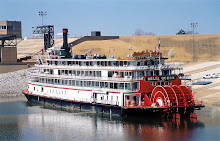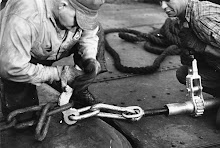There are two wonderfully droll insults in this. It was placed in an early Washington County newspaper on December 1, 1795 : Whereas a certain RALPH SMITH, of Morgan Township in this County (Greene Co. after 1796), some years ago called me a convict in a public company, and later spoke the same language in ambiguous terms, (such as his good breeding afforded). I do hereby request the favor of Mr. Smith, to wash and shave and go and inquire of Mr. James GILASPY, on the headwaters of Buffalo Creek, and Robert CARREL on the head waters of the Wheeling Creek, two gentlemen which sailed with me from the port of Londonderry, the 14th day of August in the year 1768, and landed at Newcastle, DE. the 3rd day of October following and acknowledge himself a malicious calumniator.
signed Myles Hay of Ten Mile Creek, Washington County.
He requests that he first " wash and shave " !
At Brownsville, for many years the head of steamboat navigation on the Monongahela river, passengers were transferred from the stage lines to the steamboats running between this point and Pittsburgh. West bound passengers were ticketed through from Cumberland, Baltimore and other points east, to Pittsburgh and other points west, via the National Road, and Monongahela river boats. It is shown by official figures that from 1844 to 1852 when the railroads came along, that more than three hundred thousand passengers left the stage lines at Brownsville and took passage on the Monongahela steamers down the river to Pittsburgh and Wheeling. Most of the emigrants and a large number of stage passengers, probably the majority, crossed the river at West Brownsville, and went over land across Washington County to Wheeling. The same was true of the journey from West to East. The National Road through Washington County was the short cut that saved much time over the longer river route past Pittsburgh. In 1852, Brownsville lost any advantages it had based on turnpike and river modes of transportation. In that year, the Pennsylvania Railroad was completed from Philadelphia to Pittsburgh and the Baltimore & Ohio Railroad was extended from Cumberland to Wheeling through Maryland and Virginia, effectively eliminating Brownsville as a major point of transit. The prominence of the National Road and of Brownsville came to an end as travel by stage, wagon and steamboat gave way to the railroad.
The first white settlers within the territory of Washington County were Everhart Hupp, George Bumgarner, and Abraham Teagarden and these first located their homes in the vicinity of the mouth of Ten-Mile Creek, all within the triangle made by Rice's Landing, Sandy Plains and Millsboro.
Charles L. Rowan was born in 1899, son of George E. and Althea (Prinkey) Rowan. In about May of 1936, he began employment as a laborer at the No. 5 mine of the Vesta Coal Company at Vestaburg, a job to which he commuted from his home. He was killed at the mine on Aug. 18, 1936, after only having worked there for three months. Said the Daily Courier : Rowan ... was decapitated and two other workers miraculously escaped a similar fate when a large slab of slate let go as they were leaving the Vestaburg workings after completing their day's work. The trio comprised a group of workmen who had left the man trip several minutes before the tragedy. Rowan was struck by the full force of the slate which landed on his head and severed it from his body, according to Deputy Edward Hagerty of Millsboro. The fatality was the first of the year at the Vesta Company mine.
Three young men held up the W.J. Rainey Coal Co. paymaster on a trolley car between Brownsville and Allison in Fayette County on the morning of March 11, 1922. They escaped with a satchel with about $30,000 in payroll cash. A guard with the paymaster was shot and seriously wounded as bandits and guards exchanged gunfire on the car, which had about 40 passengers.
That's a tremendous amount of money for 1922. Imagine 5 or more men exchanging gunfire on a trolley with 40 people on board.
Fairmont W. Va Newspaper dated Thursday, 9 February 1882:"Steamboating at Fairmont. The steamboat HARRY arrived here, this afternoon, at half-past four o'clock, having made the trip from Morgantown, about thirty miles, in less than seven hours.
They could have walked as quickly and I believe a horse walks faster than 4 miles an hour.
The Uniontown Morning Herald of June 7, 1926 reported that John A. Logan Strauch ... fell between two railroad cars while working on the Monongahela Division of the Pennsylvania Railroad at Clarksville. He had worked for the railroad for a number of years, at one time working out of the Rainey yards here, and was employed in the Brownsville section at the time of his death. The crew was shifting cars when the accident occurred.
Nick Massini discusses a ghost at Clyde Mine in Fredericktown, Pennsylvania. "The old Clyde mine was haunted by a fire boss that was killed years before. He was seen regularly seen making his run at the Ross Shaft area."
Richard Marcavitch recounted a ghost he saw at Vesta Five owned by the J and L Steel Company. He saw this ghost sitting in his dinner hole every day about the same time.
From 1906-1939 over 35,00 men died in coal mine accidents. In 1907 Pennsylvania lost 1614 with 5 disasters alone claiming more than 800 men.

In the 30's Clyde miners developed a reputation as the first to go on strike. Then they got up early next morning to see that no one else worked.
Vesta 1 Allenport 1891 - 1924
Vesta 2 American Mine Lucy Station Elco 1892 - 1915
Vesta 3 Globe Mine Coal Center 1892 - 1918
Vesta 4 California, Daisytown, Richeyville 1903 - 1984
Vesta 5 Vestaburg 1907 -
Vesta 6 Denbo 1903 - 1947
Vesta 7 West Brownsville 1918 - 1923
This old boatman did it all : Unknown newspaper dated Monday, 3 March 1884:
Interview With a Veteran River Man. Our reporter met Capt. I. N. Hook, the oldest river man on the Ohio, at the Swann House this morning. The Captain commenced steamboating in 1827. He was in this neighborhood at the time of the flood of 1832. He was the first who placed his barges in front of his steamboat when towing. Formerly it was customary to hitch them on behind, or tie them to the sides. His manner of towing was considered very amusing at its origin, but no one thinks of towing in any other way at the present time.
The Captain introduced the whistle now universally used at the present time. It was by accident that he discovered it. He was going into Wheeling and his whistle was broken. The upper hemisphere was blown off. He placed in its stead a keg. His whistle also caused much amusement but it has taken the place of the old 'bowl' screecher, which would almost lift a man off his feet when it blew.
The Captain also invented the 'spool windlass' by means of which the gates of the locks on all our rivers are now opened. They were formerly swung back by huge windlasses making hard work for eight men. Curious to say he took out no patents on the invention but gave the Company for which he worked all the advantages gratuitously.
He has been up the Little Kanawha repairing the locks damaged by the late flood. The Captain says he took the first steamboat to Burning Springs that ever passed up the Little Kanawha. He is now on his way to the Muskingum to repair the canal washed out in the flood.
I'll bet he invented the telegraph too, and the internal combustion engine , sliced bread , electricity, pop tarts and cheese in an aerosol can. I'll bet when the water got low he just put the boat on his back and waded upstream.













































